- Learning time
- 20 minutes
- First play time
- 90 minutes
Wingspan
Designed by: Elizabeth Hargrave
In Wingspan you are bird enthusiasts, hoping to create the best aviary by attracting these airborne creatures. Each bird is worth a number of points – but there are other ways to score, as we shall see.
Everyone starts the game with their own board: on it, you’ll see three rows where bird cards can be added: forest, grassland and wetland. You also begin with 8 action cubes: on your turn, you place a cube on one of these rows and take the associated action: in the forest, you gather food. In the grassland, you collect eggs. And in the wetlands, you can place a cube to add bird cards to your hand.
Why you’re doing these things becomes clear quickly, as the three economies of the game are indelibly intertwined with the most important action: playing a bird card, by adding it to a row on the board from your hand. You need food in order to play any bird card anywhere. You need eggs to play a bird card further up the rows (first one egg, then two). And you need bird cards because without bird cards in your hand, you can’t play any!
There are two crucial things to note here. The first is that the more bird cards in a row, the more powerful the get food/eggs/cards actions become: instead of a single food, for instance, you’re picking up two and then three. As the food comes in five different types, and birds are picky about which type they will eat, this is extremely helpful. The second is that each bird has a power of some kind – triggering either the moment when it’s played, between turns (pink powers) or – as with the majority of birds’ brown powers – when you activate a row. This means that as well as picking up food/eggs/bird cards when you place a cube in a row, you also get the benefits of the birds in that row as well, lending Wingspan a sense of escalation and momentum, as you go from picking up a paltry worm at the start of the game to (for instance) getting three food, two eggs and a bird card all in one fell swoop…
Although you’re all developing your own individual aviaries, there is some competition here too: each of the game’s four rounds gives players an objective, such as most birds in wetland, or most eggs in a certain type of nest. The points haul for coming first in these categories is considerable, and balancing those goals with the objectives on your own Bonus cards (you start with one, but may find ways to pick up more) gives Wingspan a nice balance between tactical play and strategy. During rounds 2, 3 and 4 you’ll have one less cube than the preceding round – they are used to mark the round-by-round objective placings – and the end of the fourth round players add up the value of their birds, round objectives, bonus cards, and eggs to determine who is Lord of the Birds.
The guru's verdict
-
Take That!
Take That!
Very little. Most of what you're doing focuses on your own board.
-
Fidget Factor!
Fidget Factor!
Low! It's unlikely that you'll be so swamped with birds, eggs and food that you're swimming in choices. That said, each decision is important, because of how each of Wingspan's economies of food/eggs/birds interconnect.
-
Brain Burn!
Brain Burn!
The rules aren't too overwhelming, and once you're past that initial play everything is pretty straightforward. The brain-burning is about how you connect this disparate elements together into a whole so your activation turns aren't just giving you random stuff, but exactly what you need to play X, which facilitates Y, which will score points with Z and so on.
-
Again Again!
Again Again!
There's a huge amount of cards here, and you'll never come anywhere close to using all of them in a single game. Objectives are also randomly decided, and the available cards dictate the kind of approach you want to take without making the game seem pre-determined.



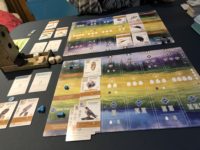
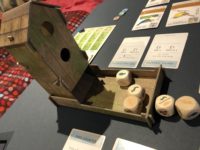
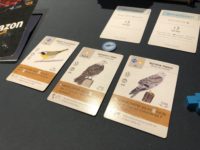


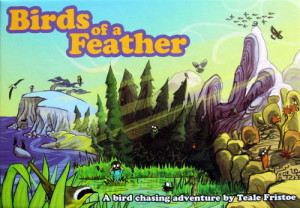
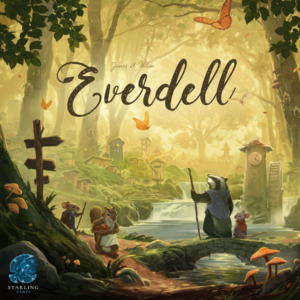
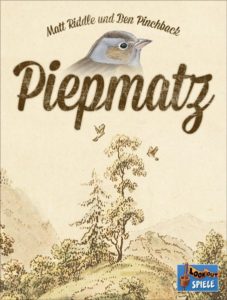
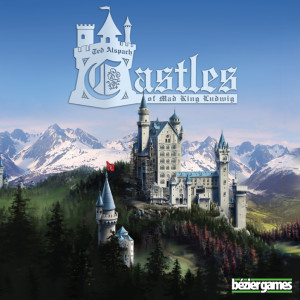

Sam says
Publishers Stonemaier always take care over presentation, but Wingspan's 170 bird cards are absolutely gorgeous: every single one showing a unique North American bird (there's a European expansion you can mix in if you're smitten). Our pictures don't do them justice. And the gameplay itself is very good too: deep enough and variable enough to offer multiple visits, but also accessible enough that youngsters can get their heads around it quickly, if taught by someone familiar with the game. The heart of it is so simple: take one of four actions. The variety comes in with the birds and what they all do, presenting you with an increasing array of options. This has a gentle, almost ambulatory feel, and my own tastes skew a little more towards story, combat, a bit of luck, a bit of silliness, to the point that I don't yearn to return to Wingspan again and again. But when I do, it's always enjoyable: this is a deftly designed, perfectly pitched, wonderfully realised package that can, and will, delight many.